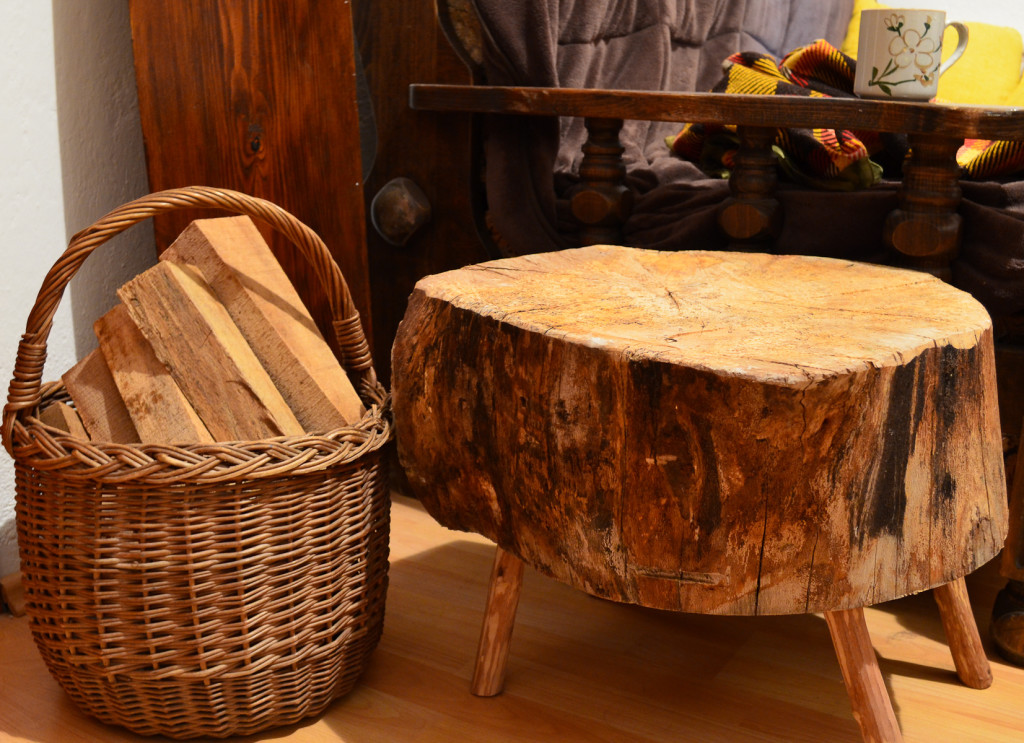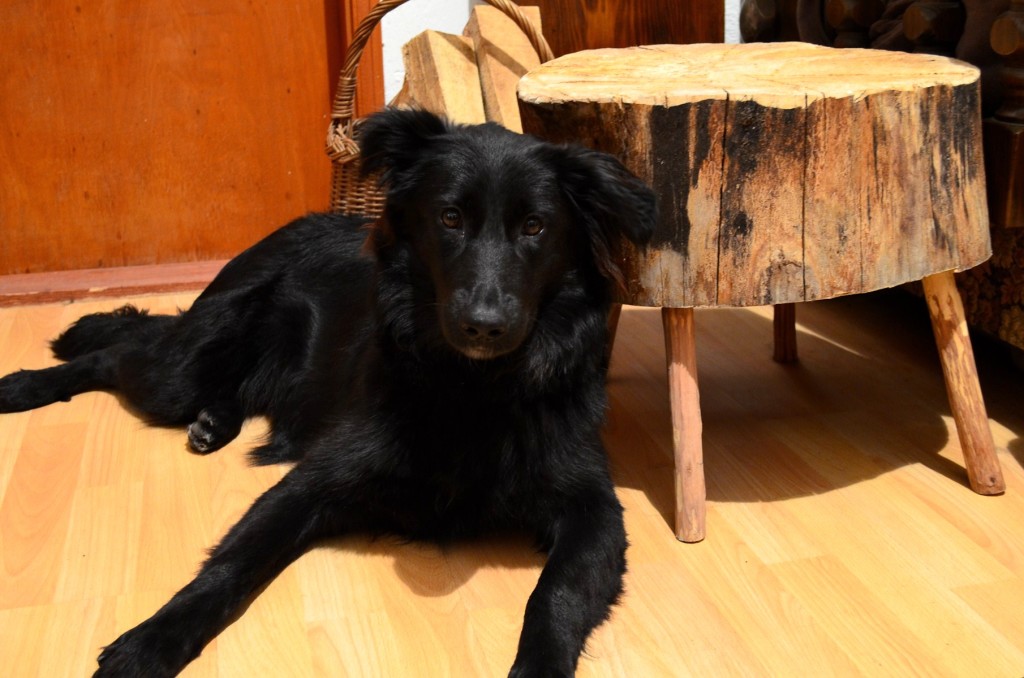If on a personal level this entire project is about, in Fromm’s terms, turning away from ‘to have’ towards ‘to be’, then on a more concrete, every-day, material level, it is definitely about gradually shifting away from ‘to buy’ towards ‘to make’. This applies to food, clothing and shelter.
In collaboration with my neighbor S., in only 20 minutes of team work, a few laughs, and with some good initial idea, we made a piece of furniture which probably goes on the very top on my list of the favorite objects ever owned. Although in my life I lived in some ultra modern interiors, lately I have realized that what really gets me is actually only stone and wood. And I mean imperfect, reclaimed old wood, which has some character. Thus, when I spotted in S.’ courtyard some purposeless, half-rotting tree stumps, I instantly knew I want one of them in my new home, in some resurrected edition.
In terms of building and fixing things, he knows a bit of everything about everything, so we made this piece faster than you need time to cook some brown rice. This is the result.

It still has some existential problems. It is indecisive about either to be a chair, nightstand or a coffee table.








A piece like that costs a fortune in Sao Paulo. You pay for the coolness and the feeling of contributing to something “sustainable” — ironic as it is, here is one of the most unsustainable cities in the planet.
Good point. I guess today the same applies for paying ridiculous money to experience ‘genuine holidays’, which include something like driving on a mule or picking up carrots or Swiss chard. These are examples of our bizarre ways just to in the end come to the very starting point.
…or so called adventure tourism, where you end up paying an awful lot of money for the opportunity to spend your holidays in some of the most uncomfortable ways imaginable.